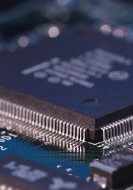CBMC
About CBMC
 CBMC is a Bounded Model Checker for C and C++ programs.
It supports C89, C99, most of C11/C17 and
most compiler extensions provided by gcc, clang, and Visual Studio. A variant
of CBMC that analyses Java bytecode is available as JBMC. For Rust, get Kani.
CBMC is a Bounded Model Checker for C and C++ programs.
It supports C89, C99, most of C11/C17 and
most compiler extensions provided by gcc, clang, and Visual Studio. A variant
of CBMC that analyses Java bytecode is available as JBMC. For Rust, get Kani.
CBMC verifies memory safety (which includes array bounds checks and checks for the safe use of pointers), checks for various further variants of undefined behavior, and user-specified assertions. Furthermore, it can check C and C++ for I/O equivalence with other languages, such as Verilog. The verification is performed by unwinding the loops in the program and passing the resulting equation to a decision procedure.
CBMC is available for most flavours of Linux (pre-packaged for Debian/Ubuntu), Windows and MacOS. You should also read the CBMC license (BSD 4-clause).
CBMC comes with a built-in solver for bit-vector formulas that is based on MiniSat. As an alternative, CBMC has featured support for external SMT solvers since version 3.3. The solvers we recommend are (in no particular order) Boolector, CVC5 and Z3. Note that these solvers need to be installed separately and have different licensing conditions.
For questions about CBMC, contact Daniel Kroening.
CBMC News
CBMC version 6 has been released!
Major changes:
- Checks for undefined behavior are now on by default. Use
--no-standard-checksto restore the previous default. - The default behavior of
mallocnow enables returningNULL. Use--no-malloc-may-failto restore the previous default. - Calls to functions without body now trigger a verification error.
- The default verbosity is now 6. Use
--verbosity 8to restore the previous default.
CBMC Documentation
The CPROVER Manual contains a tutorial from a user's point of view and describes what properties are checked.
A set of slides on CBMC: PDF, 2x3 handouts.
The sources are available here.-
The primary reference for CBMC is A Tool for Checking ANSI-C Programs (ca. 2000 citations).
We also have a list of interesting applications of CBMC.
CBMC Download
We are maintaining CBMC for x86 Linux, Windows and MacOS.
| Windows |
Download cbmc-6.6.0-win64.msi, and then double-click to install. This is an x64 binary for the command line (there is no GUI). You will need to run CBMC from the Visual Studio Command Prompt. We recommend you install the free Visual Studio Community. |
|---|---|
| Ubuntu 24.10 and Debian trixie |
Do |
| Debian Ubuntu 22.04 and 24.04 |
While the current stable Debian and Ubuntu 20/22.04 do have a cbmc package,
this package is at version 5.12,
which is more than a decade old. Download one of the following binary
packages: |
| Fedora |
Do |
| MacOS |
To get a recent version of CBMC, consider using Homebrew, and then do This is a command-line tool only, there is no GUI. You need to have the Command Line Tools for Xcode, which can be downloaded by running the Xcode application or from here. |
| Source Code |
Source code is available here. |
If you need a Model Checker for Verilog or SystemVerilog, consider EBMC.
This research was sponsored by the Semiconductor Research Corporation (SRC) under contract no. 99-TJ-684, the National Science Foundation (NSF) under grant no. CCR-9803774, the Office of Naval Research (ONR), the Naval Research Laboratory (NRL) under contract no. N00014-01-1-0796, and by the Defense Advanced Research Projects Agency, and the Army Research Office (ARO) under contract no. DAAD19-01-1-0485, and the General Motors Collaborative Research Lab at CMU. The views and conclusions contained in this document are those of the author and should not be interpreted as representing the official policies, either expressed or implied, of SRC, NSF, ONR, NRL, DOD, ARO, or the U.S. government.